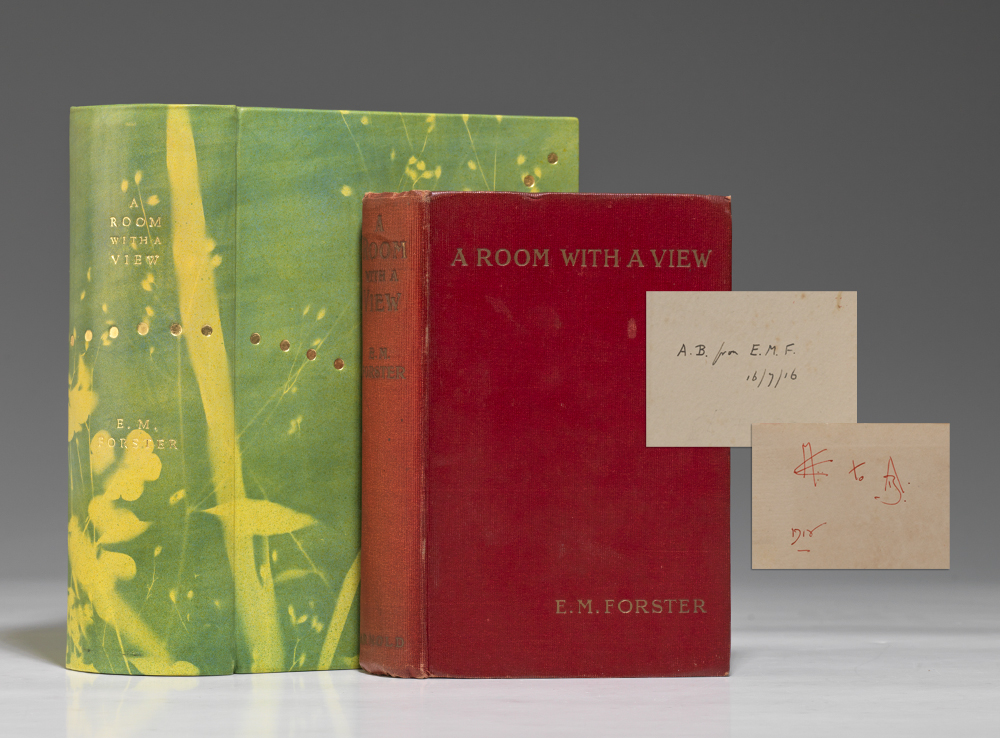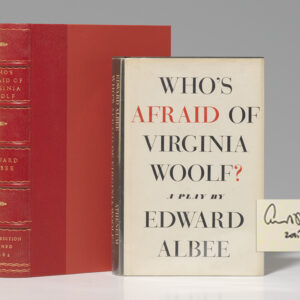Description
A GREAT RARITY: PRESENTATION FIRST EDITION OF E.M. FORSTER’S A ROOM WITH A VIEW, INSCRIBED BY FORSTER TO HIS FRIEND AIDA BORCHGREVINK
FORSTER, E.M. A Room With A View. London: Edward Arnold, 1908. Octavo, original burgundy cloth.
First edition of Forster’s classic novel, presentation copy to his friend Aida Borchgrevink, inscribed on the front pastedown, “A.B . from E.M.F 16/7/16.,” with Borchgrevink’s stylized note of presentation “EM to AB 1916” on the facing endpaper.
“Played against a sharply and intimately observed background of tennis and tea parties and amateur piano recitals,” A Room With a View traces Lucy Honeychurch’s passion for the unconventional and impulsive George Emerson as it develops within the confines of conventional British society. “Forster satirizes the English abroad, criticizes the sterility, snobbery, and ‘witty weariness’ of the self-consciously cultured, and describes Italy itself as a liberating vision” (Drabble, 845). One of only 2000 copies. Without exceedingly rare original dust jacket, as usual. Kirkpatrick A3a. The recipient of this copy, Aida Borchgrevink (1861-1931), was a long-time friend and correspondent of Forster, and a peripheral member of the Bloomsbury group. She was first introduced to Forster by Robert Furness in Alexandria in 1915, and was one of many colorful characters whom he met in Egypt. “An extraordinary woman, Aida Borchgrevink was a force of nature. She was born in America, the daughter of a Midwestern corn king… Now in her mid-fifties, after a decade of widowhood, she lived an extravagantly romantic and eccentric life with her daughter in a fashionable suburb of the city” (Moffat, E.M. Forster: A New Life, 131). She took a great fancy to Forster, and insisted on calling him “Rickie,” based probably on this being the nickname of the protagonist in Forster’s The Longest Journey. The two remained correspondents for several years after first meeting; a number of letters from Forster to her are preserved in Britain’s National Archives.
Interior generally fine, cloth with a few marks, slightest fading to spine. Presentation copies of the first edition are truly rare; we have only traced one other inscribed copy in the auction records, to Forster’s grandmother (Franklin P. Adams sale, Sothebys London 2001).




